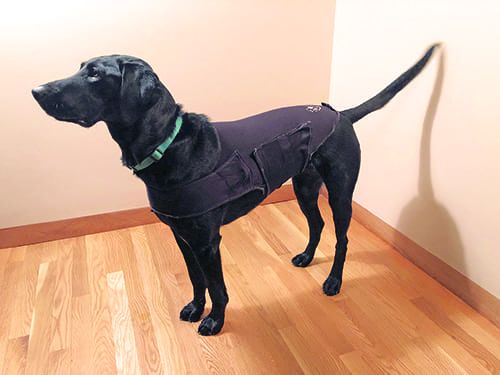In 1975, horse trainer Linda Tellington-Jones studied the Feldenkrais Method with its founder, Moishe Feldenkrais. In this form of bodywork for people, gentle and non-habitual movements activate unused neural pathways to the brain. It is famous for helping people improve their athletic ability, increase their physical and mental function, and fully recover from injuries. First adapting its movements for horses, Tellington-Jones began experimenting with other animals. Tellington TTouch (pronounced tee-touch) is now a popular, hands-on therapy for dogs, cats, and even zoo animals.
TTouch improves communication between dogs and handlers, helps solve behavioral as well as physical problems, helps dogs adapt to new or different situations, enhances performance, and helps dogs recover from excitability, nervousness, thunder phobia, extreme fear, shyness, leash pulling, excessive barking, excessive chewing, jumping on people, and other out-of-control behaviors.
Although it resembles massage, TTouch is different, consisting of a series of light “touches” applied in 1 1/4 circles (like around the clock, from 6 o’clock to 9 o’clock). It has a calming effect on most dogs, and more importantly, it can help reactive dogs completely change their responses to triggers and other distractions. TTouch books, videos, webinars, online classes, and in-person workshops make it easy to study and practice.
TTouch trainers pioneered body wraps (see “TTouch Practitioners Explain Canine ‘Body Wrapping,’” WDJ December 2002), which are simple arrangements of elastic bandages. They are said to help dogs feel more confident, feel less threatened by thunder and other loud noises, and reduce their reactive responses. In our 2002 article, Indianapolis neurobiologist Shereen D. Farber, Ph.D., explained how wrapping a dog can cause lasting behavioral changes. “Any type of trauma can damage nerve receptors, leading to exaggerated responses to stimuli,” she said. “Applying constantly maintained pressure provides an unchanging, quieting stimulus that causes the receptors to adapt and modify their thresholds in a cumulative manner.”
When Blue was at her most agitated, I tucked her into an Anxiety Wrap or wrapped her with Ace bandages, and within minutes her tight, taut, on-guard muscles relaxed. With and without wrapping, she responds to TTouches all over her body, including her ears and even around and in her mouth. The mouth TTouches are said to help with snapping, growling, and mindless barking.
Some TTouch webinars deal specifically with reactive dogs, but even general TTouch instructions make a difference.







I wonder how much this multi funtional Tellington-tttouch is? Hope it will work